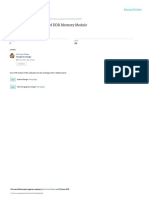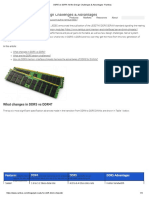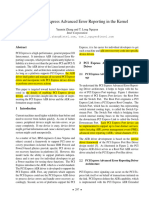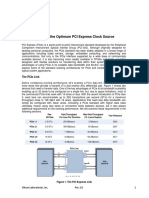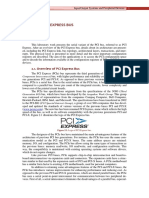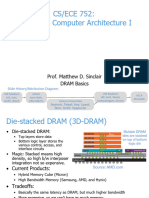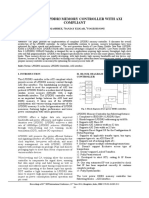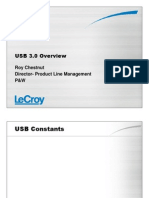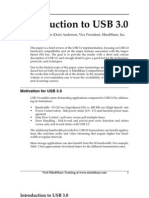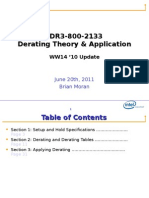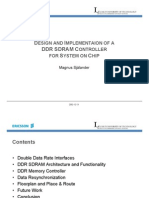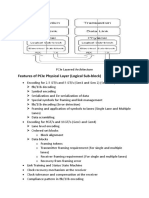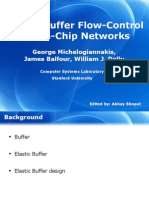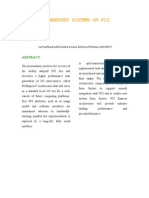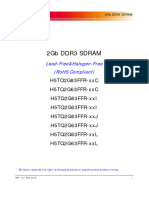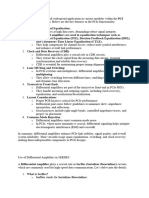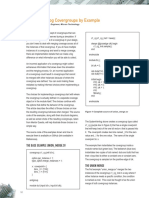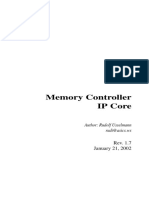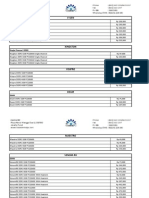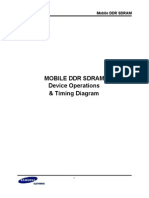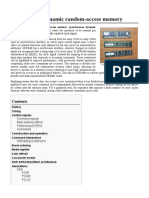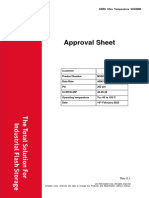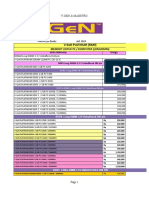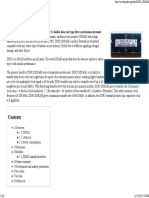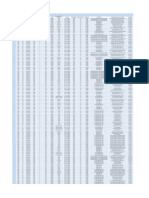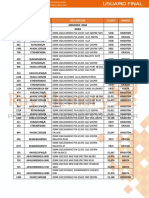0% found this document useful (0 votes)
246 views28 pagesDDR Sdram
The document discusses DDR3 SDRAM memory. It explains that DDR3 reads and writes data on both the rising and falling clock edges, allowing it to transfer data twice as fast as SDRAM. It provides terminology for DDR3 clock frequencies and data rates. It describes the typical components of a DDR3 memory controller subsystem and details the DDR3 architecture, prefetch, and pinout. It also covers concepts like on-die termination, command descriptions, mode registers, and read/write operations.
Uploaded by
Srujana Reddy N.V.Copyright
© © All Rights Reserved
We take content rights seriously. If you suspect this is your content, claim it here.
Available Formats
Download as PDF, TXT or read online on Scribd
0% found this document useful (0 votes)
246 views28 pagesDDR Sdram
The document discusses DDR3 SDRAM memory. It explains that DDR3 reads and writes data on both the rising and falling clock edges, allowing it to transfer data twice as fast as SDRAM. It provides terminology for DDR3 clock frequencies and data rates. It describes the typical components of a DDR3 memory controller subsystem and details the DDR3 architecture, prefetch, and pinout. It also covers concepts like on-die termination, command descriptions, mode registers, and read/write operations.
Uploaded by
Srujana Reddy N.V.Copyright
© © All Rights Reserved
We take content rights seriously. If you suspect this is your content, claim it here.
Available Formats
Download as PDF, TXT or read online on Scribd
/ 28



